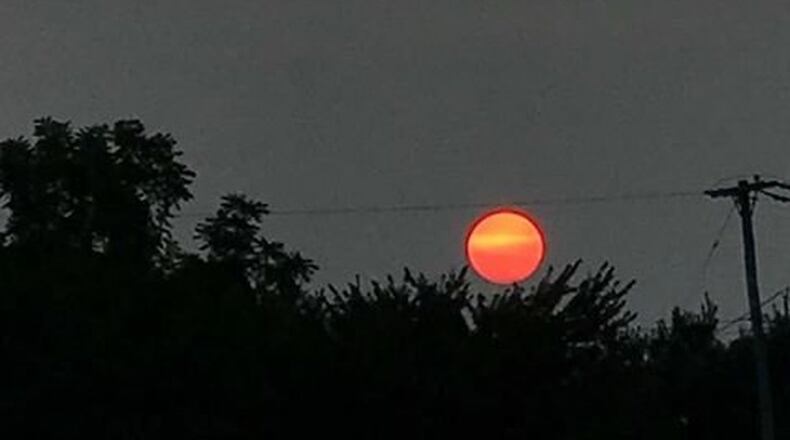There are two factors that contribute to this saying. The first is that weather systems generally travel from west to east in the mid-latitudes of the earth. Because the sun rises in the east and sets in the west, a rising sun in advance of an approaching weather system would illuminate the approaching mid- and high-level clouds to create a red sky in the morning.
Alternatively, if the sun is setting as a weather system exits and high pressure is building, then the departing clouds would be illuminated. This would create a red sky at night with fair weather to follow.
So, why is the sky blue during the day? Well, when the sun is directly overhead, light travels only a short distance through a relatively thinner section of the atmosphere. Blue light is scattered in all directions by the tiny molecules of air in Earth’s atmosphere. Blue is scattered more than other colors because it travels as shorter, smaller waves.
But as the sun edges toward the horizon, the light must travel increasingly longer paths and is scattered by more air molecules. By the time it reaches the end of this journey (our eyes), most of the blue light has been scattered out of that beam. What remains are the warmer hues of yellow, orange and red, which blend into a yellowish-orange sunset (or sunrise).
Over this past weekend though, something a bit more unusual occurred. While Saturday skies were mostly cloudy, on Sunday, clouds were much more sparse. But you may have noticed on Sunday the sky appeared to be more of a “milky” or murky color.
What was creating a high-altitude white-gray haze was smoke from massive wildfires burning in the western United States and Canada. The smoke is lofted high into the air and then carried by upper-level winds across Canada, the Northern Plains and into the Ohio Valley. But while the sky can have a murky look to it this far away from the fires to our west, the smoke has a much more vivid effect on our sunset.
Smoke particles act as a filter for sunlight by scattering shorter wavelengths of the light such as blue and leaving longer wavelengths of the light spectrum behind. This allows more orange and red colors to pass through. The effect is more enhanced at sunset since the sun is at a lower angle in the sky.
While the storm system that is pushing through the area now will likely clear much of our region from the smoke, the ongoing fires out west will likely spread smoke back into our region later this week or weekend, allowing for the more reddish sunsets to return.
If you get a fantastic sunset photo, be sure you share it with me on my Facebook, Twitter or email it to me. Of course, while the sunsets can be spectacular, let’s hope and pray that the areas being impacted by the wildfires see some relief – and soon.
About the Author
